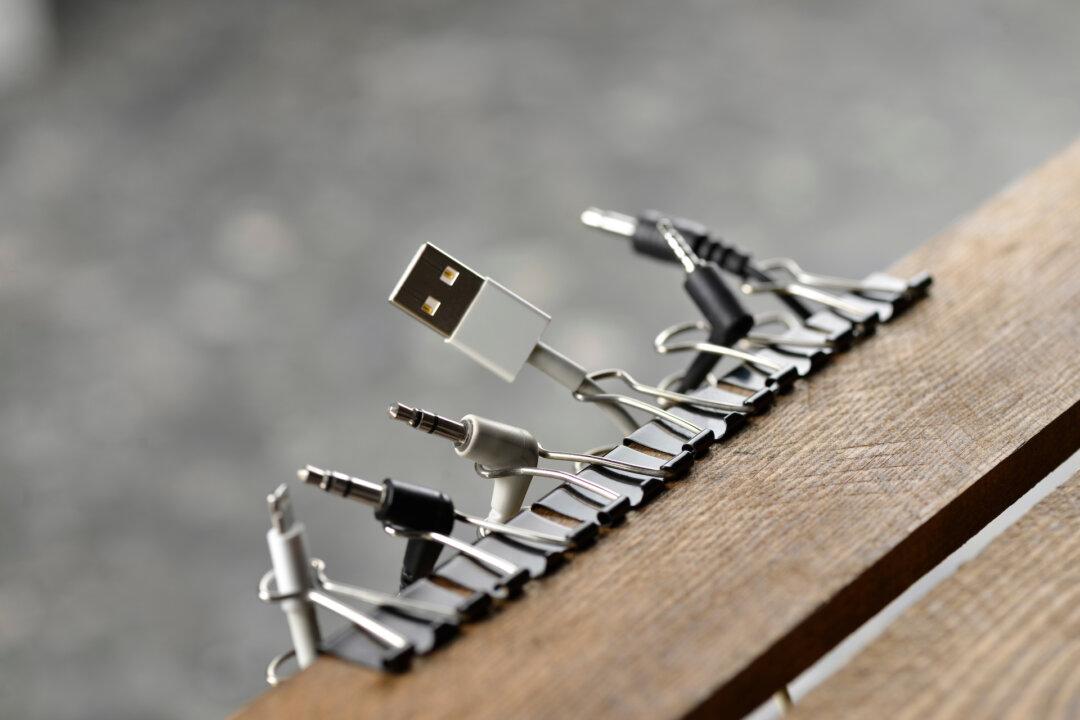Maintenance costs can put a serious dent in your budget and savings—a dent that’s tough to repair. While there are certain things you definitely need an expert to handle, there are plenty of other situations in which you can make minor but meaningful repairs without calling for professional support—while saving serious cash.
From closet rods to roof repair, and from wallpaper tricks to paint smarts, here is a sampling of practical tips and brilliant ideas to help around the house.
Closet Rod Fix
To fix a sagging clothes closet rod, buy a 1/2-inch galvanized pipe and a 3/4-inch thin-wall PVC pipe, both the same length as the rod. You can get these at a local home improvement center such as Home Depot or Lowe’s. Remove the existing sagging rod, then slip the pipe inside the PVC to create a new rod and slide this into the existing rod brackets. If you are bothered by the printing on the PVC, clean it off with rubbing alcohol.
You can easily repair a broken terra-cotta pot. Maria Sidelnikova/Shutterstock
Goofs Are Good
Want to paint your basement floor but not spend the $200 or more than the paint store quoted? Instead, ask for their oil-based goofs (paint tinted the wrong color), which work well on unsealed cement. You can usually get five gallons for much less than the shelf price, since the store is anxious to get rid of those mistakes! Of course, it might turn out a strange shade of gray as a result of mixing odd colors, but hey, it’s a basement floor!Pot Repair
Don’t throw out that busted terra-cotta pot; you can repair it quite easily. First, moisten the breaks with water. Then, squeeze carpenter’s glue onto the broken edges and reset the pieces. Circle the pot with strips of masking tape to hold the pieces in place. Let the bond harden; Elmer’s Glue-All is a good choice here, because once it’s dry, it’s waterproof and bonds stronger than wood.Paint Storage
Don’t let those leftover portions of paint go to waste. Store partially full cans of paint upside down. The paint will form an airtight seal, which will extend its useful life.Hide Furniture Scratches
Here’s a great way to hide scratches on wood furniture: First, soak the scratch with a bit of water to open the wood grain. Select a crayon that’s as close to the right color as possible. Apply the waxy substance to the scratch; rub it in well with a soft cloth, and then buff.
Don't let leftover paint go to waste. Shift Drive/Shutterstock
Neat Caulk
Use this trick if you have trouble getting the caulking around the tub or sink to look right: Tape the tub with blue painter’s tape, and leave about 1/4 to 1/2 inch on either side of the joint for the caulking. Then, squeeze the new caulk and smooth it out. Remove the tape and you will have a clean line. The caulk will look great. Just be sure to carefully remove the tape before the caulk starts to set.Wallpaper Remover
Plain white vinegar makes a great wallpaper remover. First, remove all of the wallpaper you can by simply pulling it off. You‘ll probably get only the top layer of the paper, and that’s OK. Then, spray full-strength vinegar on what remains. This will begin to dissolve the glue. Once softened, you’ll be able to remove the rest without harsh chemicals.Freezer Paintbrush
When tackling a painting job, you may not be able to complete it in one day. So, don’t waste all of the paint in the rollers and brushes by cleaning them. Simply wrap them tightly in plastic wrap and store in the freezer. Remove the wrap the next day and you'll be ready to pick up right where you left off.Perfect Pilot
To prevent wood from splitting, professional woodworkers drill a “pilot hole” before nailing molding or floor base in place. If you can’t find a bit small enough to match the nails you’re using, cut off the head of one of the nails with a pair of nippers. Then place it in the chuck of your power drill just as you would a regular drill bit. The nail easily cuts through the molding and makes the correct size hole for the finishing nail.Mary Hunt is the founder of EverydayCheapskate.com, a frugal living blog and the author of the book “Debt-Proof Living.” Mary invites you to visit her at her website, where this column is archived complete with links and resources for all recommended products and services. Mary invites questions and comments at EverydayCheapskate.com/contact, “Ask Mary.” Tips can be submitted at Tips.EverydayCheapskate.com. This column will answer questions of general interest, but letters cannot be answered individually. Copyright 2021 Creators.com





